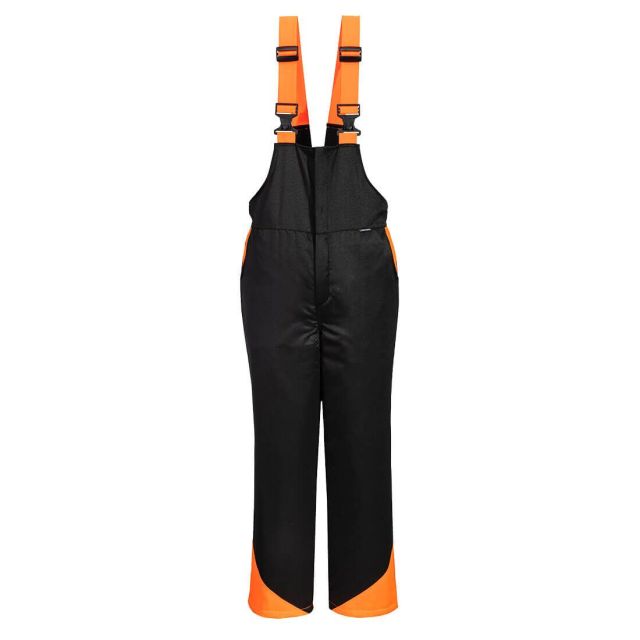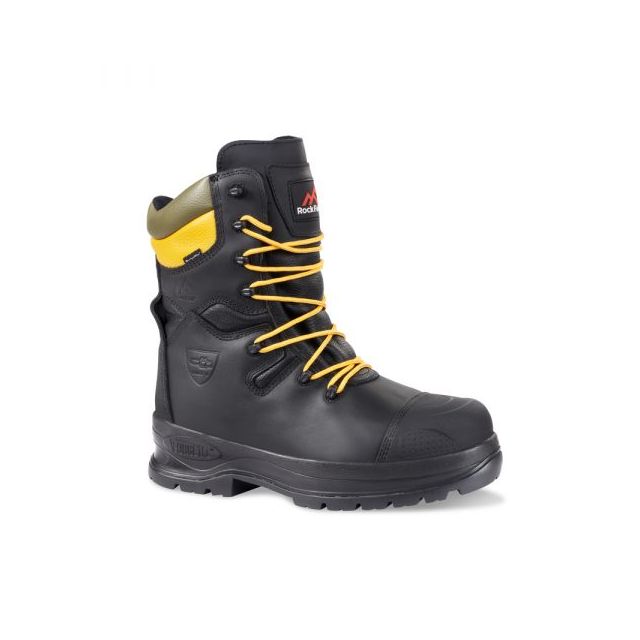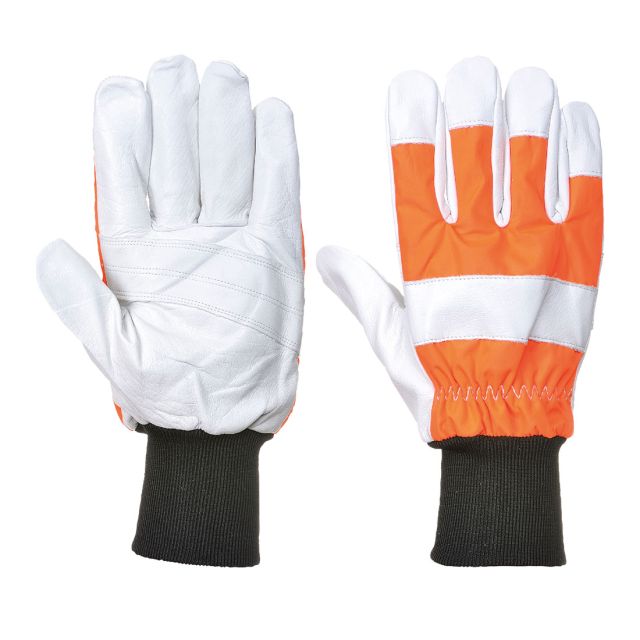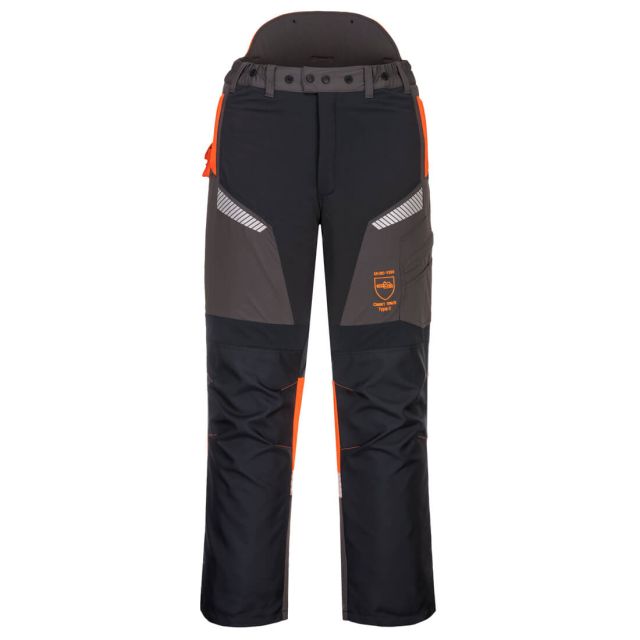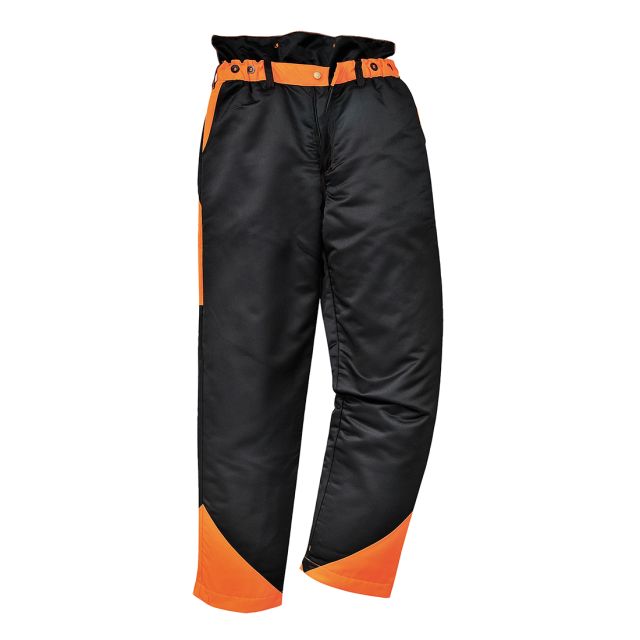Tree Surgeon and Arborist Clothing: What Safety Gear to Wear and When to Wear It
Tree surgeons prune and treat old or damaged trees in order to preserve them, but this type of work involves working at heights, lifting heavy loads, and utilising dangerous equipment like chainsaws, which means it can be hazardous work.
We are assuming you have already completed your chainsaw work risk assessment.
What is arborist clothing? How do you buy it?
Here’s what to wear and when to wear it.
- Page Contents
- Protecting the Head & Face
- Protecting the Body
- Speciality Arborist Equipment
- When Should I Wear All This?
Protecting the Head and Face
Tree surgeons and arborists need to consider protecting their entire head: face, ears, head, and eyes from wood chips and chainsaw impact if kickback occurs. Tree surgeons need to wear protective hard hats, visors and/or eye protection, and ear protection.
Hard Hats
All arborists and tree surgeons need to invest in an appropriate, protective hard hat. Specialist hard hats for tree surgeons are an all in one, protecting the face, ears, and head with attached visors and ear defenders too.
Chainsaws can easily cut into hard hats if the chainsaw has kickback. The sun weakens the hat over time so it should be replaced every 3-5 years. If cracking is heard or damage found, replace the hat immediately. Nobody wants to realise their arborist's hard hat is faulty as a chainsaw hits their skull. That mental imagery is intentional.
Hard hats must meet EN 397 standards.
Face and Eye Protection
Many tree surgeons opt for a mesh visor that attaches to their helmet. Both mesh and polycarbonate visors protect against twigs and wood chips penetrating the eyes.
Mesh visors are adequate because quality chainsaws do not produce sawdust, only uniform chips that cannot penetrate these speciality mesh visors. Some tree surgeons opt to wear additional eye protective goggles underneath visors, or simply wear safety goggles without visors; it’s all up to individual preference.
Polycarbonate visors can become hot in the summer, and some of these visors (as well as the mesh ones) come pre-attached to hard hats with added ear defenders as well.
Ear defenders
Many tree surgeon hard hats come with ear defenders attached; however, some arborists opt to wear additional ear protection in the form of disposable and non-disposable ear plugs.
Non-electric chainsaws are usually 115 dB but the recommended exposure limit is 85 dB, so it’s vital that tree surgeons reduce noise to acceptable levels with a combination of ear defenders and/or ear plugs.
Dust Masks
Some tree surgeons may opt to wear dust masks under their mesh visors for added respiratory protection.
Various masks are available from XAMAX® that meet the FFP respiratory ratings systems, however, the practice of arborists using dust masks is not particularly common.
Protecting the Body
Most chainsaws have safety features to address kickback problems, and to reduce the risk of injury from chain breakage; however, the EU requires that arborists and tree surgeons wear chainsaw trousers, chainsaw proof boots, and gloves, which means the fabric will have chainsaw protective fabric, and have a special chainsaw logo.
This logo indicates that the fabric has been tested to protect the wearer properly; it also shows the class of protection and the rated maximum chain speed for that type of fabric.
Utility Trousers and Chainsaw Protective Clothing
Even though chainsaw protective clothing has come a long way, the struggle is providing fabric that saves against violent impact, but is also light, flexible, and comfortable. Some more protective fabrics make the wearer too hot, and prevent movement, which is equally unsafe, so there has to be a balance between the two.
Chainsaw protective fabric has extra fabric layers to improve cut resistance. Chainsaw manufacturers improve their safety features instead because fabrics can only withstand so much.
Chainsaw clothing is designed to slow the chain’s rate of cutting and clog the mechanism and not protect the wearer entirely.
Arborists and tree surgeons opt either to wear just chainsaw protective utility trousers or an entire suit of chainsaw protective fabric. The choice is up to the weather and the individual.
Higher class chainsaw trousers are more expensive, hotter, and heavier, and are chosen to match the saw speed. Some trousers protect only the front of the leg, and others are more like chaps, worn over conventional work clothes and trousers.
A tree surgeon can either purchase utility trousers, and then use chainsaw protective chaps, or wear speciality trousers. Tree surgeons often wear bib and brace overalls over chainsaw clothing to help keep protective clothing in place, but now specialist chainsaw proof overalls exist.
Material may deteriorate over time if washed too often in hot water, so make sure you care for your trousers and chaps properly; however, other types of trousers need to be washed routinely to maintain protective properties like Avertic. All chainsaw trousers must comply with EU EN381-5.
Hi vis Jackets and T-shirts
Most tree surgeons opt to wear hi vis jackets and/or hi vis t-shirts to be more visible to the public and each other.
But those don't protect against the risks posed by a chainsaw blade
All chainsaw protective jackets must comply with EU EN381-11, and at time of writing, there are no hi vis chainsaw jackets available. If hi vis is required on site, a high quality hi vis vest should suffice over the top of regular chainsaw protective clothing.
Chainsaw Protective Gloves and General Purpose Gloves
Chainsaw gloves, or arborist gloves, are made of cut-proof fabric similar to the fabric for arborist trousers, but generally only for the back of the left hand. Chainsaw gloves should not be overly padded since the gloves need to be flexible.
Some tree surgeons opt for a leather mitt to protect the operator’s left hand from kickbacks when it’s on the bar of the chainsaw. Most chansaw injuries occur on the back of the left hand.
Gloves should comply with EN381-7.
Protective Boots
Chainsaw boots are based on steel-toe boots with added layers of chainsaw protective fabric on any exposed surfaces. They also have lace-up leather boots or rubber wellington boot versions.
Boots are designed to protect wearers from front and sideways cuts. Protective gaiters are also available if they meet EN381-9 over general steel toe boots for occasional users, but not professionals. Boots should comply with EN345-2 as well as general EN203045 regulation and EN381-3 for chainsaw use.
Speciality Arborist Equipment
Arborists and tree surgeons cannot operate without speciality working at height equipment to help them do their jobs effectively and safely. Make sure you have the following equipment to protect you from heights, help with heavy lifting, and provide weights and balances when moving tree limbs down to the ground.
- Rigging Carabiners and Connectors
- Rigging Ropes
- Pulleys
- Lowering Devices
- Winches and Hauling Devices
- Enforcer Load Cell
- Rigging Plates and Rings
- Strops and Slings
- Chainsaw with safety features
- Stocked first aid kit
Whistle and Mobile Phone
The UK recommends that workers have a whistle to call for help when injured, and have a cell phone to call emergency services.
Even if colleagues are close by they might not be able to hear shouts between chainsaw noise and protective ear wear.
When should I wear this protective gear?
Make sure that any time you go to work as a tree surgeon or arborist, you’re wearing the maximum amount of protective gear because it only takes once to have an accident.
Always wear head to toe protection. For hotter weather, you may opt to wear a t-shirt instead of a full chainsaw protective jacket; however, it’s important to be extra careful when you’re wearing less gear.
Being a tree surgeon is dangerous work, so make sure you stay safe, wear the right protective clothing, and use the right speciality equipment.
Are you choosing the right PPE equipment for your tree surgery business?







